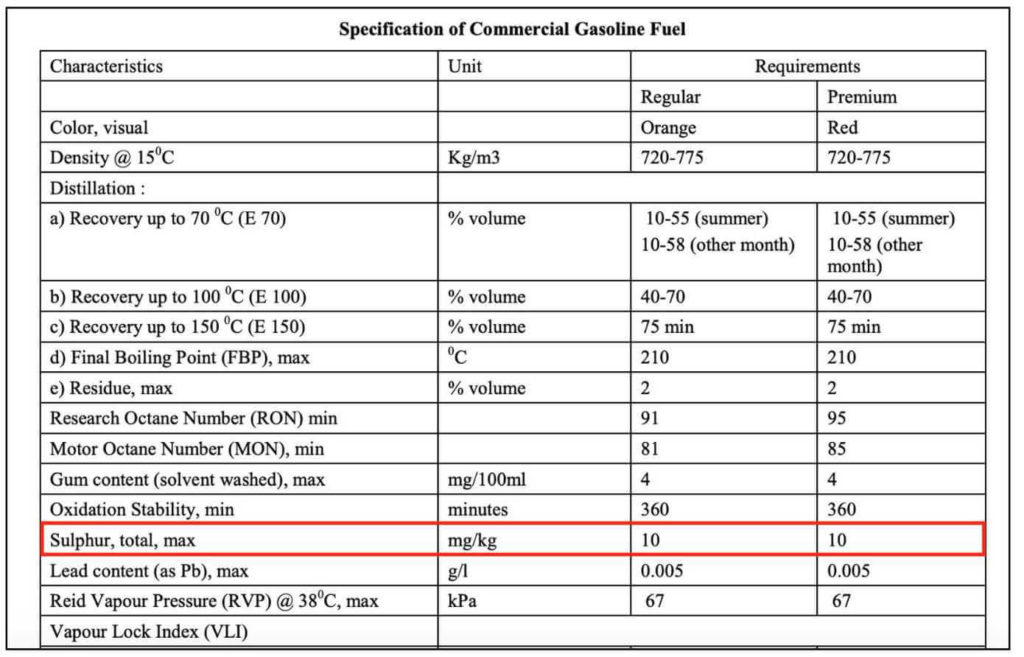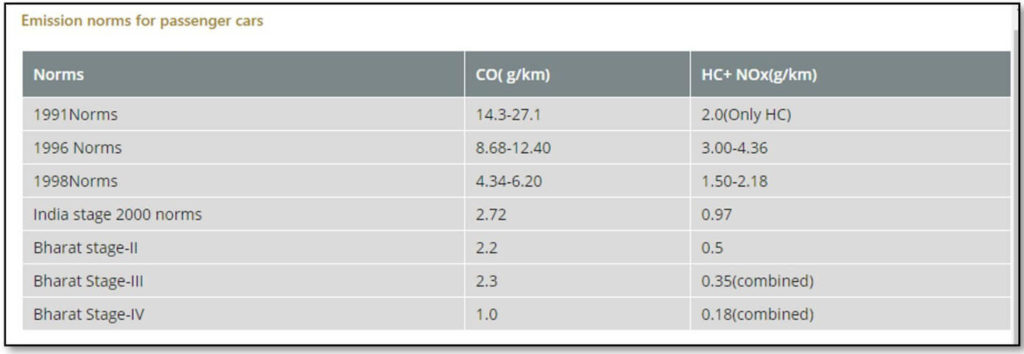With effect from 01 April 2020, BS-VI emission norms will come into force across India. But what are these BS norms and how do the new norms differ from the earlier ones? Here is an explainer.
With effect from 01 April 2020, BS VI emission norms will come into force across India. The relevant notification was issued by the Ministry of Road Transport and Highways on 19 February 2016. But what are these BS norms and how do the new norms differ from the earlier ones? Here is an explainer.
Bharat Stage norms are vehicular emission standards
Bharat Stage norms or standards, often abbreviated as BS norms, are vehicular emission standards set by the Government of India following the implementation of the National Auto Fuel Policy in 2003. The policy set a roadmap to keep a track on emissions and pollutant levels due to combustion engines of vehicles and fuels used. Every few years, the emission standard is upgraded to reduce the quantum of allowed emissions of various pollutants. The newer or latest BS norms imply lesser pollutants emitted by a vehicle. Norms are applicable to both, the vehicle’s engine as well as fuel. In short, BS norms help keep pollution in check. Once the government issues standards, it is mandatory for all vehicle manufacturers to produce vehicles based on these norms.
BS standards were introduced based on European vehicular emission standards
Vehicular emission laws were first introduced in India in 1991 and made stringent in 1996. BS norms were arrived at, based on European emission standards following Supreme Court’s order in 1999. Bharat Stage-I and Bharat Stage-II vehicle norms, broadly equivalent to Euro I and Euro II standards, were introduced in India and National Capital Region (NCR) respectively in 2000. Since then, the standards have been improved progressively over the years.
Progressively, government is upgrading the quality of fuel and vehicle engine standards
In 2005, while BS-I quality fuel was phased out, BS-III fuel was made available in 13 major cities and BS-II fuel was made available elsewhere in the country. From April 2010, BS-IV fuel was made available in 13 major cities while BS-III was made available in the rest of the country from September in the same year. BS-VI fuel will be available in the country starting from 01 April 2020.

The upgrade in fuel quality over the years resulted in the decline in toxic components present in fuel such as benzene and sulphur. Lead was phased out from gasoline and since 2000, only unleaded gasoline is sold in India. Likewise, in the case of diesel too, the upgradation in standards has resulted in the reduced presence of harmful hydrocarbons in the fuel.
India has directly leapfrogged from BS-IV to BS-VI level in 2020 to meet global standards
From 2010, BS-III norms were made effective throughout the country. BS-IV norms came into force in the entire country from April 2017. With effect from 01 April 2020, BS-VI norms will become effective pan India. Despite the recommendations of the parliamentary committee in 2015 to implement BS-IV norms in 2017, BS-V norms in 2020 and BS IV norms from 2024, the government decided to leapfrog to BS-VI from BS-IV in 2020 itself. One can also note that the period of enforcement of each of the BS level has also been reduced in India. One reason is to keep up with European countries. Europe introduced Euro VI standards in 2015 itself. Euro-IV was introduced in 2009.
This time, Compliance norms have been made compulsory for all vehicles across the country
It can also be seen that earlier BS norms were implemented in phases, initially introduced in major cities and then expanded pan India later. This meant that people could buy vehicle of lower BS level from other parts of the country. Similarly, in the case of vehicles as well, each stage came up with different deadlines for 2 and 3 wheelers, and 4 wheelers. However, this time, the standard is applicable to all vehicles including buses and heavy vehicles. Motor vehicles used by the government for defence purpose and special purpose vehicles used for internal security, and law and order are exempted from BS-IV norms itself. They are also granted exemption from BS-VI.
BS-VI compliant vehicles will produce lesser quantity of particulate matter and greenhouse gases
Vehicles with BS-VI compliant engine require petrol and diesel with Sulphur content not more than 10 parts per million (ppm). BS-IV fuel contains five times more Sulphur, that is, 50 ppm. BS-VI vehicles will have advanced emission control technologies such as diesel particulate filters which will help in reducing ‘Particulate Matter’ emission and ‘Nitrogen Oxides’ emission which are the major contributors to air pollution.

By leapfrogging to BS VI standards, it is estimated that the emission of nitrogen oxides will be reduced by 88.5% and that of particulate matter will be halved in diesel-based heavy-duty vehicles. In the case of diesel-based passenger cars, the reduction will be 68% and 82% respectively. 25% reduction in emission of nitrogen oxides is also expected in the case of gasoline (petrol) based passenger cars. Thus, the emission of greenhouse gases and toxic gases will be reduced.

Supreme Court ordered only BS-VI vehicles will be sold from 01 April 2020
The Supreme Court clearly stated in its 2018 ruling that with effect from 01 April 2020, only BS-VI compliant vehicles, including two and three-wheelers, and commercial vehicles, should be sold & registered in India. This was following a plea by the government to give a grace period to the automobile manufacturers to sell BS-IV vehicles beyond 31 March 2020. The Supreme Court, however, stressed on the need for a cleaner environment and declined the extension citing the rampant air pollution in major cities of the country. In 2017, a similar judgement was given for the implementation of BS-IV standards.
BS-VI fuel was introduced in the National Capital Territory of Delhi in 2018. Around Rs. 30,000 crores are estimated to be the expense of the Central government in order to ensure that BS-VI fuel is available throughout India. As per the Auto Fuel Vision and Policy- 2025 report, Rs. 20,000 crore is the estimated investment for transformation to BS-VI gasoline and Rs. 60,000 crores for BS-VI diesel. Many automobile manufacturers like Maruti Suzuki, Hero MotoCorp and TVS Motors, had begun production of BS-VI compliant vehicles in 2017-18 itself.
What will happen now?
Considering the health implications and environmental problems resulting from the use of BS-IV fuels, the change to BS-VI fuel is a welcome move. Also, this change is in line with India’s move towards meeting global standards. At the same time, automobile manufacturers will no longer be able to sell the existing stock BS-IV compliant vehicles from 01 April 2020 unless the engine is modified to meet the BS-VI standards. Further, India’s automobile industry is already facing a slowdown. The move to BS-VI standard vehicles is bound to increase the cost of vehicles discouraging the sales further.
Featured Image: BS VI emission norms


